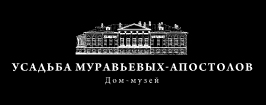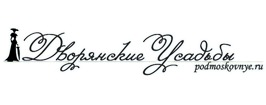The Sukhanovo Manor: The Cradle of Imperial Aristocracy

The Sukhanovo manor is one of the most significant estates situated near Moscow. Before its heyday, the manor owned by the king in the XVII century had many other owners, such as the tutor of Peter I boyar T. N. Streshnev (1644-1719), the chief prosecutor of the Senate I. I. Dmitriyev-Mamonov (1680-1730) and his nephew, writer F. I. Dmitriyev-Mamonov (1727-1805).
In 1761, Sukhanovo was bought by brigadier A. G. Guryev, father of the future finance minister, who was involved in the secret Russian political history. He was assigned to guard the "Brunswick family" of Anna Leopoldovna overthrown in 1741. In 1763, Guryev built the stone Church of Virgin’s Nativity in Sukhanovo, the oldest building of the estate, which remained until 1935.
Since 1769, the manor was owned by a major dignitary of Catherine's time Alexei Petrovich Melgunov (1722-1788), who started the construction of main house existing now. At the same time, in the 1770s, the first park and outbuildings appeared. A. P. Melgunov began his service as an adjutant of the Grand Duke Pyotr Fedorovich, the future Peter III. During his short reign, he was one of the few persons trusted by the Emperor and participated in the manifesto "On nobility’s freedom" composition. During the coup, he remained faithful to Peter III; because of this, he was out of work at the beginning of Catherine’s reign. However, in 1764 he became the Governor-General of the New Russia. During his governing, famous "Melgunov treasure" of Scythian jewelry was found at the Dnieper. Alexei Petrovich was an active official, he occupied three public positions at once: he was the governor of Yaroslavl, Vologda and Arkhangelsk for many years. Under his management, a large-scale reconstruction of provincial and district towns was held. He was known as a generous benefactor and philanthropist, being buried in Tolga Monastery near Yaroslavl.
By the time Sukhanovo was inherited by Melgunov’s daughter Yekaterina Alexeevna Volkonskaya (1770-1855), it was already a developed lordly manor. At the beginning of the 19th century, the Volkonsky family completely transformed its appearance.
The first building of the new century appeared in Sukhanovo due to a sad occasion. In September of 1812, at the height of the war against Napoleon, Yekaterina Alexeevna’s husband prince Dmitry Petrovich Volkonsky (1764-1812), the general intendant of the army, died. Having buried her husband in the church of the Ryazan manor Malinki, she conceived the tomb-temple construction in Sukhanovo. While Moscow was still in ashes after the French conquest, a mausoleum was built in Sukhanovo within one summer season of 1813 according to D. Gilardi’s project; it became the first monument to heroes. Together with the temple, two almshouse buildings for disabled veterans were constructed.
Ye. A. Volkonskaya had considerable influence on the court due to her close relationship with the prince P. M. Volkonsky, a friend of Alexander I, who was her nephew, although he was only 6 years younger. Society called the princess «la tante militaire», which can be translated as "military establishment aunt", because P. M. Volkonsky was the general staff chief since December of 1812. In 1848, the princess was awarded with a title of mistress by Nicholas I as a sign of respect. Ye. A. Volkonskaya formed the image of the manor, which made it a wonderful art work of Alexander’s era. The existing buildings were reconstructed and new ones were built with the participation of famous architects D. Gilardi, K. Rossi, V. P. Stasov and A. Menelas. The empire style and romantic fantasies of medieval architecture determined the ensemble’s stylistic features. An extensive landscape park was arranged on its territory, which spectacularly used steep slopes of the dammed river Gvozdnia coast. Three main areas were fixed – a living one with the adjoining main part of the park, a service and economic one and a memorial one at a distance, where the mausoleum was. The harmony of aesthetic landscape and stylish buildings and monuments in it distinguished Sukhanovo from most manors putting it on a par with exceptional ensembles, such as Pavlovsk, Kuzminki, Monrepo.
Since the 1820s, a big role in the estate affairs was played by the prince Pyotr Mikhailovich Volkonsky (1776-1852), who received Sukhanovo for management from his aunt.
He was one of the most influential state officials during the time of Alexander I and Nicholas I. He was Alexander’s close friend; their friendship began in 1797 when Volkonsky became his adjutant. After Alexander’s coming to power, Volkonsky’s career went up. Being already a general, he showed personal courage in the battle of Austerlitz. During the war against Napoleon, in fact, he was the emperor’s right hand; then, he accompanied him to the Congress of Vienna. The name of Volkonsky is associated with the creation of the General Staff, the first head of which he was since 1813. In 1815-1822 he led the entire Russian army clashing with powerful A. A. Arakcheev. The prince witnessed the death of Alexander I in Taganrog. Being his close friend and comrade-in-arms, he headed the organization of his funeral. He carried out the same mission six months later because of the death of the empress Yelizaveta Alekseevna. During the time of Nicholas I, he retained his position and became the Minister of the Court and the manager of His Majesty's Cabinet. Due to his merits, the emperor awarded Volkonsky with the title of Grand Duke, and in 1850 Volkonsky received the rank of Field Marshal. Being a grandson of the architect prince P. V. Makulov, Volkonsky chaired the Committee for the construction of St. Isaac's Cathedral in St. Petersburg since 1839. He died in St. Petersburg and was buried in the Vvedenskaya church of Semenov regiment, where he started his service. In Soviet times, the tomb was destroyed along with the temple.
The next owner was his son, the court chamberlain prince Dmitry Petrovich Volkonsky (1805-1859). His wife Maria Petrovna Volkonskaya, nee Kikina (1815-1854), showed great interest in arts. She had an idea of designing the Sukhanovo interior in different historical styles. For this, she invited a well-known artist, academician F. G. Solntsev, who was famous due to the restoration of the Terem Palace paintings in the Moscow Kremlin. He created rooms in Turkish, Egyptian and Chinese styles in Sukhanovo.
The last pre-revolutionary owner of the estate was the prince Pyotr Dmitrievich Volkonsky (1845-1919), who had not yet reached the age of adulthood. Many buildings became dilapidated, the park was overgrown during his ownership in the late 19th century. In the first years after the revolution, Sukhanovo was looted. The old "Guryev" church adjacent to the house and almost all the park buildings and memorials were broken. In 1935, the USSR Union of Architects holiday house was located in Sukhanovo. According to projects by V. D. Kokorin and N. D. Vinogradov, the main house and mausoleum were reconstructed and adapted to the new functions. Now the manor is still run by the RF Union of Architects. Its condition is far from prosperity after numerous property disputes, raider seizure attempts and lootings in the 1990s.
Almost all valuable monuments in Sukhanovo need restoration. The «Architectural Heritage - Russian Manor Endowment Fund» was established in December 2015. This point, perhaps, should be considered as a start of the estate restoration. The foundation has already held a number of charitable events and concerts in the estate, collected substantial funds. According to the foundation management, the Sukhanovo manor is highly prospective. Relatively small investments in the restoration of the buildings and manor park would result in the emergence of one of the most striking centers attracting lovers of Russian history and culture near Moscow.

Source: http://ohrgos.ru/index.php/rubriki/dostoyanie/202-%D1%83%D1%81%D0%B0%D0%B4%D1%8C%D0%B1%D0%B0-%D1%81%D1%83%D1%85%D0%B0%D0%BD%D0%BE%D0%B2%D0%BE-%D0%BA%D0%BE%D0%BB%D1%8B%D0%B1%D0%B5%D0%BB%D1%8C-%D0%B8%D0%BC%D0%BF%D0%B5%D1%80%D1%81%D0%BA%D0%BE%D0%B9-%D0%B0%D1%80%D0%B8%D1%81%D1%82%D0%BE%D0%BA%D1%80%D0%B0%D1%82%D0%B8%D0%B8








